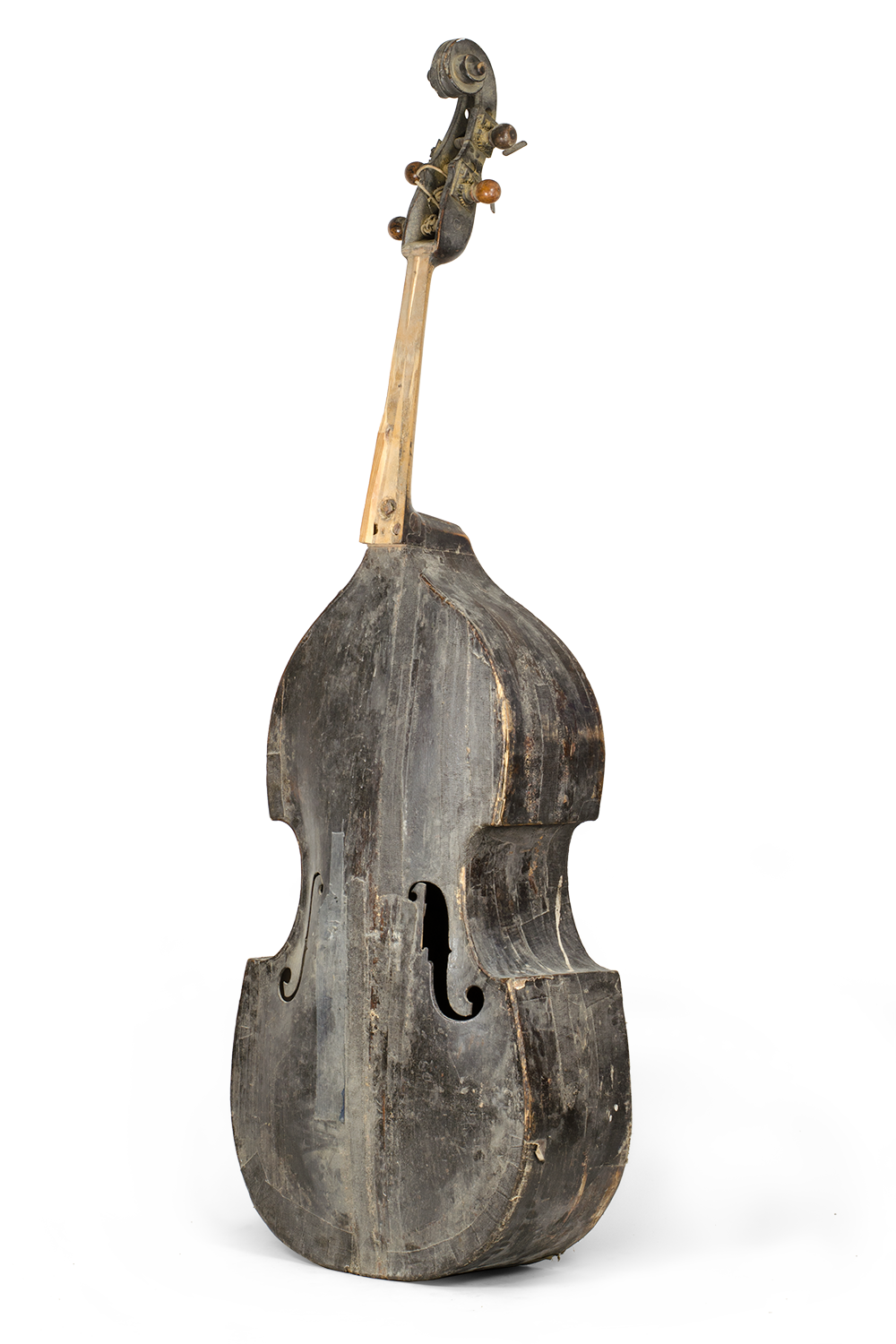
Repairs, if done well, last for a long time and are a good investment in the sound and value of your instrument. We are not afraid of deformed archings, worm damage or instruments that are only preserved in fragments. Restorations – for churches and monasteries – are part of our contribution to the preservation of cultural assets.
Occasionally I receive double basses in deplorable condition. However, a closer look may also show that restoration makes sense. For the layperson, this is difficult to imagine with such instruments, which are often only preserved in pieces.
This project should provide an insight into what a revival of such instruments might look like.
The double bass built by Johann Blasius Weigert in 1732 as it arrived at our workshop. Cracks that appeared on the body were covered over with parchment and strips of linen on the outside over the centuries of which some were painted black. An attractive packaging with a wonderful content.
After removing the linen and parchment, all the cracks and joints opened up. The instrument began to fall apart into its individual parts.
Most of the ground could be preserved. Unfortunately, the original varnish had bonded to the overlays and could not be preserved.
The condition after hundreds of hours of assembling, replacing missing parts and restoring deformities.
The interior was able to be preserved and prepared in its original form. The neck was grafted and the peg house was restored to its original shape.
The instrument from 1732, which had already fallen into disrepair, is a testament to the art of Austrian violin making. The balancing act and contradiction between restoration and preservation in the state of tradition will always exist. This is the end of my effort to keep these artifacts sounding and as original as possible.
Um dir ein optimales Erlebnis zu bieten, verwenden wir Technologien wie Cookies, damit unsere Seite zuverlässig und sicher läuft. Wenn du deine Zustimmung nicht erteilst oder zurückziehst, können bestimmte Merkmale und Funktionen beeinträchtigt werden.